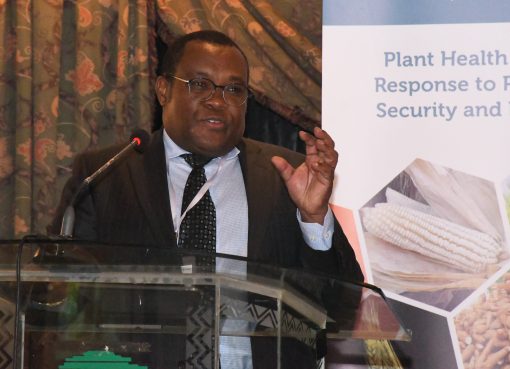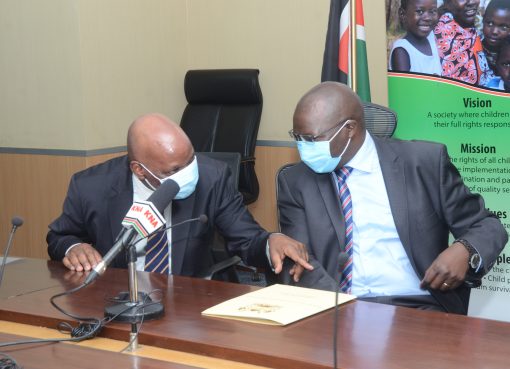The East African region has witnessed remarkable advancements in network coverage, a surge in mobile and internet subscriptions, as well as notable growth in mobile money services.
These developments have been pivotal in driving socio-economic growth, fostering digital inclusion, and enhancing connectivity across East Africa.
Speaking during the unveiling of the 2023 statistics report on the telecommunications sector in the East African region during the 29th Annual Assemblies and Extraordinary Congress in Kenya, Dr. Ally Simba, Executive Secretary of the East Africa Communication Organisation (EACO), said the extent of coverage of basic mobile connectivity has been influenced by factors such as infrastructure, investment, and regulatory environments.

Simba said the mobile industry in East Africa is experiencing significant growth, with the average mobile penetration rate across the region reaching 100 per cent in 2023.
This growth outpaces both the average for the ITU Africa Region (92 per cent in 2023, up from 82 per cent in 2021) and the global average (111 per cent in 2023, up from 107 per cent in 2021).
Kenya and Tanzania have the two highest mobile penetration rates in the region, at 129 per cent and 113 per cent respectively in 2023.
Kenya’s penetration rate increased by 2 percentage points between 2021 and 2023, while Tanzania’s rose by 16 percentage points, and Rwanda’s mobile penetration rate was 94 per cent last year.
Other countries in the region are also experiencing particularly strong growth, with Uganda’s mobile penetration rate jumping from 70 per cent in 2021 to 81 per cent in 2023 and Southern Sudan’s significant increase from 29 per cent to 36 per cent over the same period.
According to Vice Chairperson Sector Working Group Keith Bamwesigye, who gave the statistics, the growth of the mobile industry in East Africa is being driven by several factors, including the increasing availability of mobile data and voice services as well as growing government investment in ICT infrastructure.
He said the regional population coverage average penetration stands at 98 per cent, with Rwanda leading the region with a mobile network penetration rate of 99 per cent, followed by Tanzania and Uganda at 98 per cent, Burundi and Kenya at 97 per cent, and South Sudan at 65 per cent.
The percentage of the population covered by a mobile-cellular network refers to the percentage of inhabitants within range of a mobile-cellular signal, irrespective of whether or not they are subscribers or users.
On the coverage of the 2G network, Bamwesigye said that the region has remained stable with a regional average of 92 per cent, and countries like Kenya, Burundi, Rwanda, and Uganda maintain high coverage and ensure basic communication services are widely accessible.
Regarding 3G coverage, the regional average increased from 71 per cent to 78 per cent with Kenya and Rwanda leading with almost universal 3G coverage, maintaining rates of 97 per cent and 99 per cent respectively.
“There has also been a significant gain in Tanzania and Uganda, with 3G coverage rising from 60 per cent to 86 per cent and Uganda’s increasing from 66 per cent to 78 per cent respectively, driven by targeted investments and regulatory support for telecom operators,” he added.
In contrast, the Vice Chair noted that the growth in Burundi and South Sudan has stagnated, with both countries seeing no significant changes at 51 per cent and 54 per cent, respectively, indicating potential areas for focused development.
Kenya is leading the pack in the EAC region with close to 97 per cent 4G coverage by last year, while Tanzania has shown remarkable growth, increasing its 4G coverage from 35 per cent to 79 per cent Burundi and Uganda have also shown growth, with Burundi’s coverage rising from 27 per cent to 32 per cent and Uganda’s from 27 per cent to 35 per cent
The statistics report also shows that mobile money is also playing a major role in driving mobile penetration, as it provides a convenient and secure way for people to send and receive payments.
“East Africa is one of the fastest-growing mobile markets in the world, and this growth is expected to continue in the coming years. This presents a significant opportunity for mobile operators, handset manufacturers, and other players in the mobile ecosystem,” Dr. Simba noted.
Across the region, mobile internet usage experienced growth, and internet traffic surged by 54 per cent and escalated from 1.90 billion gigabytes (GB) in 2022 to 2.92 billion GB in 2023.
Kenya led this surge with a 140 per cent increase in mobile internet traffic, soaring from 281.18 million GB in 2022 to 674.67 million; Uganda’s rose by 44 per cent from 421.53 million GB to 605.90 million GB during the same period.
Burundi experienced an 85 per cent increase in mobile internet traffic, climbing from 30.57 million GB in 2022 to 56.45 million GB in 2023; Tanzania’s grew by 34 per cent, reaching 1.03 billion GB in 2023 compared to 766 million GB in 2022.
Rwanda saw a 33 per cent increase in mobile internet traffic, rising from 387.55 million GB in 2022 to 514.33 million GB in 2023, while South Sudan recorded growth in mobile internet traffic, surging by 204 per cent from 14.40 million GB in 2022 to 43.84 million GB in 2023.
“This growth, according to the report, can be attributed to the accessibility of affordable Chinese smartphones, which have enabled more people to access mobile internet,” Bamwesigye said, noting that telecom operators contributed significantly by expanding network coverage and introducing competitive data plans, making internet services more appealing and accessible nationwide.
The EACO Executive Secretary, Dr. Simba, was optimistic, saying that as the region looks into the future, focus will be on bridging the digital divide, promoting innovation, and ensuring robust regulatory frameworks to support the dynamic telecommunications landscape.
The theme for this year’s 4-day Deneral Assembly taking place in Kenya is “Promoting Digital Transformation in the East African Region.”
By Wangari Ndirangu





